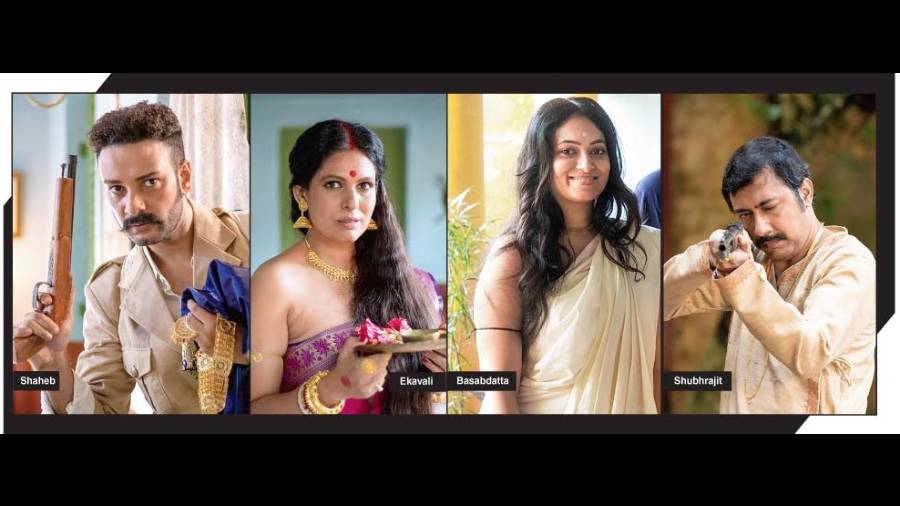An ailing zamindar, a tigress on the prowl, a professional hunter and the avenging women of a household make up the story of director Rohan Ghose’s new film Sherni, set in the post-Independence era. Produced by Keylight India, Sherni — which is the third part of Ghose’s colour trilogy— is set to stream on ALTBalaji from September 10. A candi chat with Rohan....
How did you conceive Sherni?
Sherni was festering for a while in my head. I wanted to tell a story that showed how vulnerable men can be when a pack of women decide to hunt them down.
Tell us about the storyline?
Set just after our Independence and right before the abolition of the Zamindari Act, the story follows the incidents that unfurl in the zamindari of Madhopur when a tigress turns man-eater. The ailing and frail zamindar decides to hire a professional hunter from Kolkata to do a deed he is no longer capable of. All hell breaks loose when the three women of his household (the wife, the daughter and the widowed sister) decide to hunt the hunter down itself.
Tell us about your decision to cast Shaheb Bhattacherjee, Basabdatta and Ekavali Khanna?
Ekavali is an old friend who I had worked with during Mafia. I just feel her look is versatile enough to pull off multiple roles. And in this I needed a Sarla (her character) who can turn intimidating in a second. Basabdatta is someone I have admired as an actor. And the inherent sadness that Bimala (her character) carries within her made me reach out to her. And Shaheb was a no-brainer. I needed a mean, ruthless, scheming man and he is an actor I trust who could pull this off.
Who plays whom?
Shubhrajit Mitra plays Bipradas the zamindar. Ekavali Khanna plays Sarla, his wife. Basabdatta plays Bimala, his widowed sister while Shaili Bhattacharjee plays Sharmila, his daughter. Shaheb plays Siddharth, the professional hunter.
How was it like directing the actors?
The cast was a mixed bag of actors I had worked with before and some I worked with for the first time for this film. I must mention Shaili for turning out an outstanding performance. I had worked with her extensively during Mafia but she has indeed grown up. Shubhrajit was a revelation and a find for me as a director. Shaheb and Ekavali were as good as ever to work with.
How challenging was it to shoot this as a period piece?
It was indeed given the timelines and budgetary constraints. But hats off to my team, we managed to pull this off.
How has the location informed the story?
The location (Baruipur) instantly gave me a non-urban Rajbari feel. In fact, this is probably the first location I had made up my mind to shoot in even before I saw it with my own eyes. The dense foliage around added to the murkiness and closeted nature of the narrative.
What was your takeaway from the shoot?
The biggest takeaway for me was, in fact, a reiteration. I have always felt writers are undervalued in our industry and this was a piece that was carried on its shoulders by the storyline. When you have a good script in hand, half your work is done as a director.
What are the high points of Sherni?
Given my track record of working with strong female characters, Sherni ended up imbibing the same spirit of alpha-females showing the direction. The things women do when they are driven by lust can often be more reckless and dangerous than you could imagine.
Does Sherni pay homage to Ray’s Royal Bengal Rahasya in any way in its theme or setting?
(Laughs) Ray and his works are ingrained in your sub-conscious as a maker. Homage is probably the right word but I would love to use the word ‘humble’ before it if you please.
